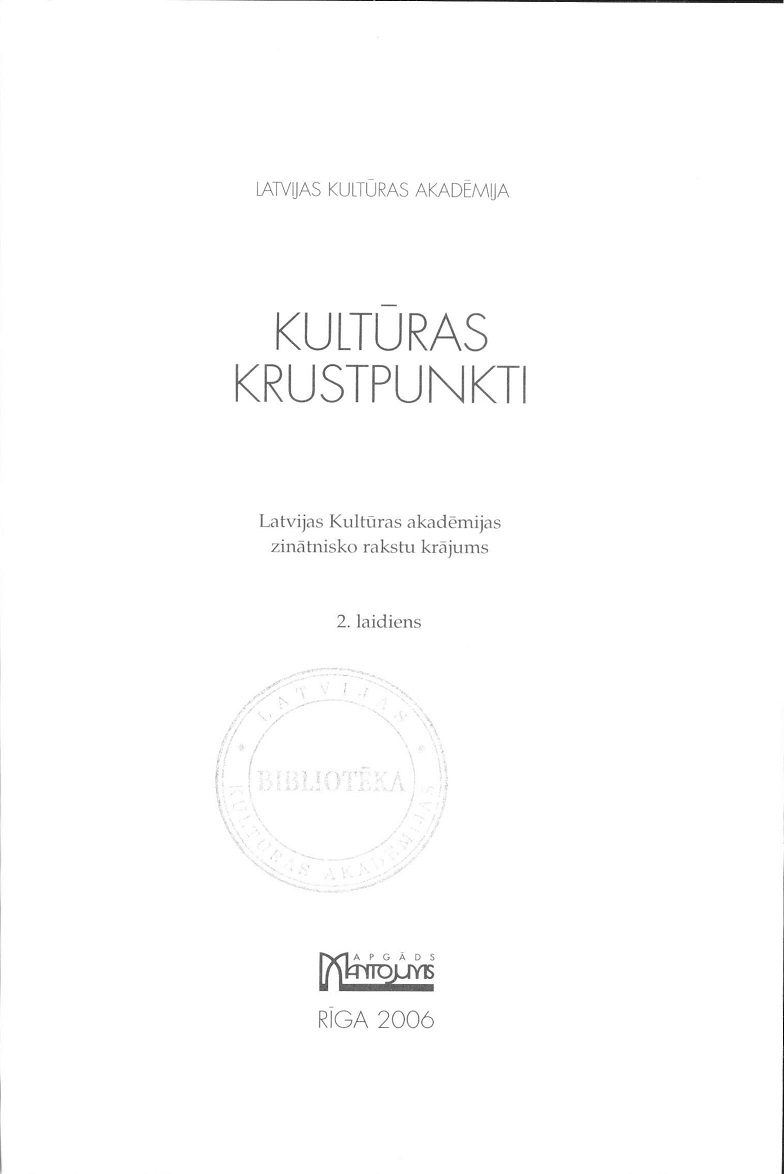Mākslinieka un varas kolīzija. Gleznotājs Aleksandrs Drēviņš (1889-1938)
Collision of the Artist with the Power. Painter Aleksandrs Drēviņš (1889-1938)
Author(s): Vitālijs SaldaSubject(s): Cultural history, Visual Arts, Political history, Sociology of Culture, Sociology of Politics, History of Art
Published by: Latvijas Kultūras akadēmija
Keywords: Aleksandrs Drēviņš; painter; artist; Soviet art; art and politics; development of art; socialism;
Summary/Abstract: In the 20ies in the Soviet Art the priority was given to the left, underground trends of art. In the art, pluralism was still predominant, and so far it had been tolerated by the Bolshevik Party. Also the Latvian painter Aleksandrs Drēviņš kept to the left positions in his artistic search. In the end of the 20ies considerable changes were taking place in the Soviet Union, and they influenced living and working conditions of both the society as such and the artists in particular. The state policy was more and more distorting the natural way of development of the arts. There expanded the fight against "formalism" in the arts. A. Drēviņš lost a teacher's job in the higher school of art; his paintings were not accepted for exhibitions. The official art criticism turned against him as a "formalist". In fact, he suffered because he refused to paint revolutionary themes or portraits of workpeople - "shock-workers of the construction of socialism", as well as because of his individual brush-work. In the course of Stalin's repressions Drēviņš was murdered in February, 1938. Nowadays A. Drēviņš is an internationally recognized artist.
Journal: Culture Crossroads
- Issue Year: 2/2006
- Issue No: 1
- Page Range: 322-334
- Page Count: 13
- Language: Latvian

